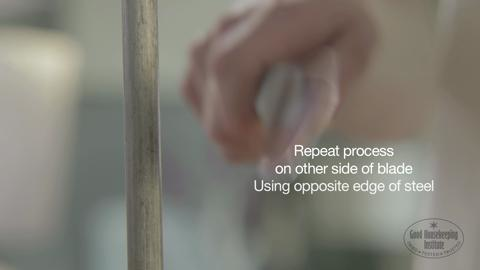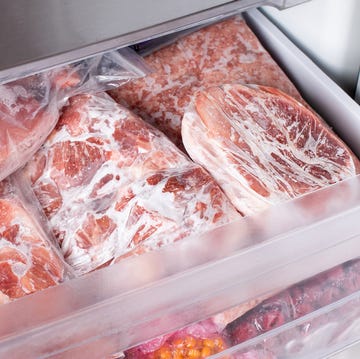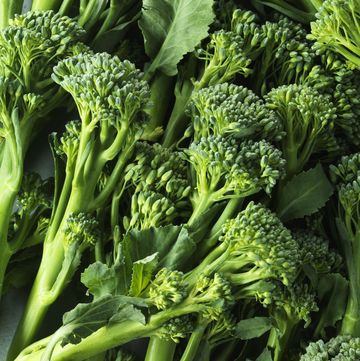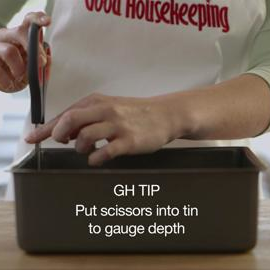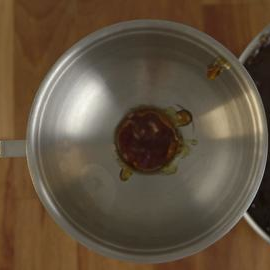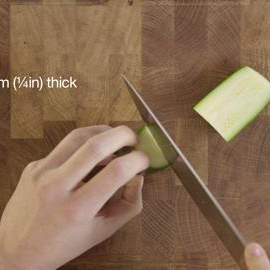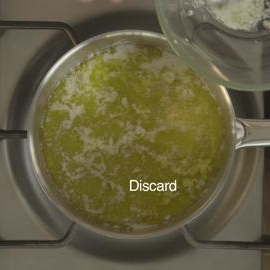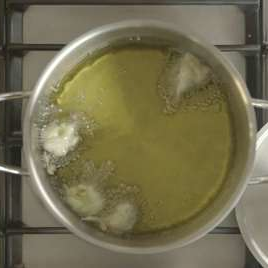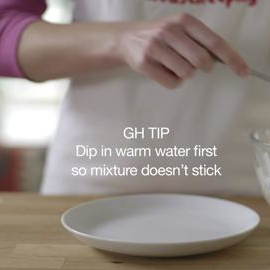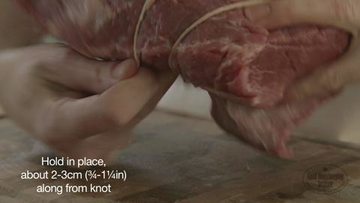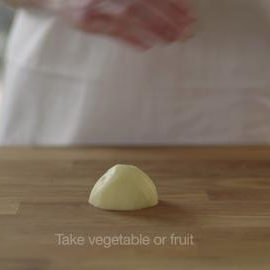1. Put steel vertically on a counter top or non slip surface, gripping firmly. To sharpen any sized knife, put bottom, ‘heel’, of knife against one edge of steel. Position knife at an acute angle, roughly between 20-30°.
2. Glide knife down steel in one smooth stroke, pulling knife gradually towards body, ending with tip of knife at bottom of steel. Pull knife smoothly away from steel.
What to read next
3. Repeat process on other side of blade, using opposite edge of steel. Repeat on alternate sides, a few times per side. Check sharpness and continue if necessary.
4. The condition of blade, quality of knife and hardness of metal will affect how long it takes to sharpen.
5. Sharpening steels only hone edge of knife. If knife is completely blunt, it will require professional sharpening to restore edge.6 After sharpening, wipe all knives with a paper towel, to remove any metal filings that might be on blade.
Use your skills to make these triple-tested recipes:
Sunday gammon with parsley sauce recipe
Sushi recipe
Sunday lunch recipes
Pro bread knife, Pro chef’s knife, Pro paring knife, Zwilling J.A. Henckels. Oak chopping board, Lakeland. Knife sharperning sword, chef's own.
A crack team of highly skilled food content producers, the GH Kitchen Team are Good Housekeeping’s resident recipe developers and all-round food obsessives. GH Kitchen Director Sarah Akhurst is our resident hosting pro and loves nothing more than putting on a foodie feast for friends. Senior Cookery Writer Alice Shields is a former pastry chef and baking fanatic who loves making bread and would have peanut butter with everything if she could. Lover of all things savoury, Senior Cookery Writer Grace Evans can be found eating nocellara olives at every opportunity, and will take the cheeseboard over dessert any time. With a wealth of professional kitchen experience between them, they’re dedicated to ensuring every Good Housekeeping recipe is the best it can be, so you can trust they’ll work every single time.
